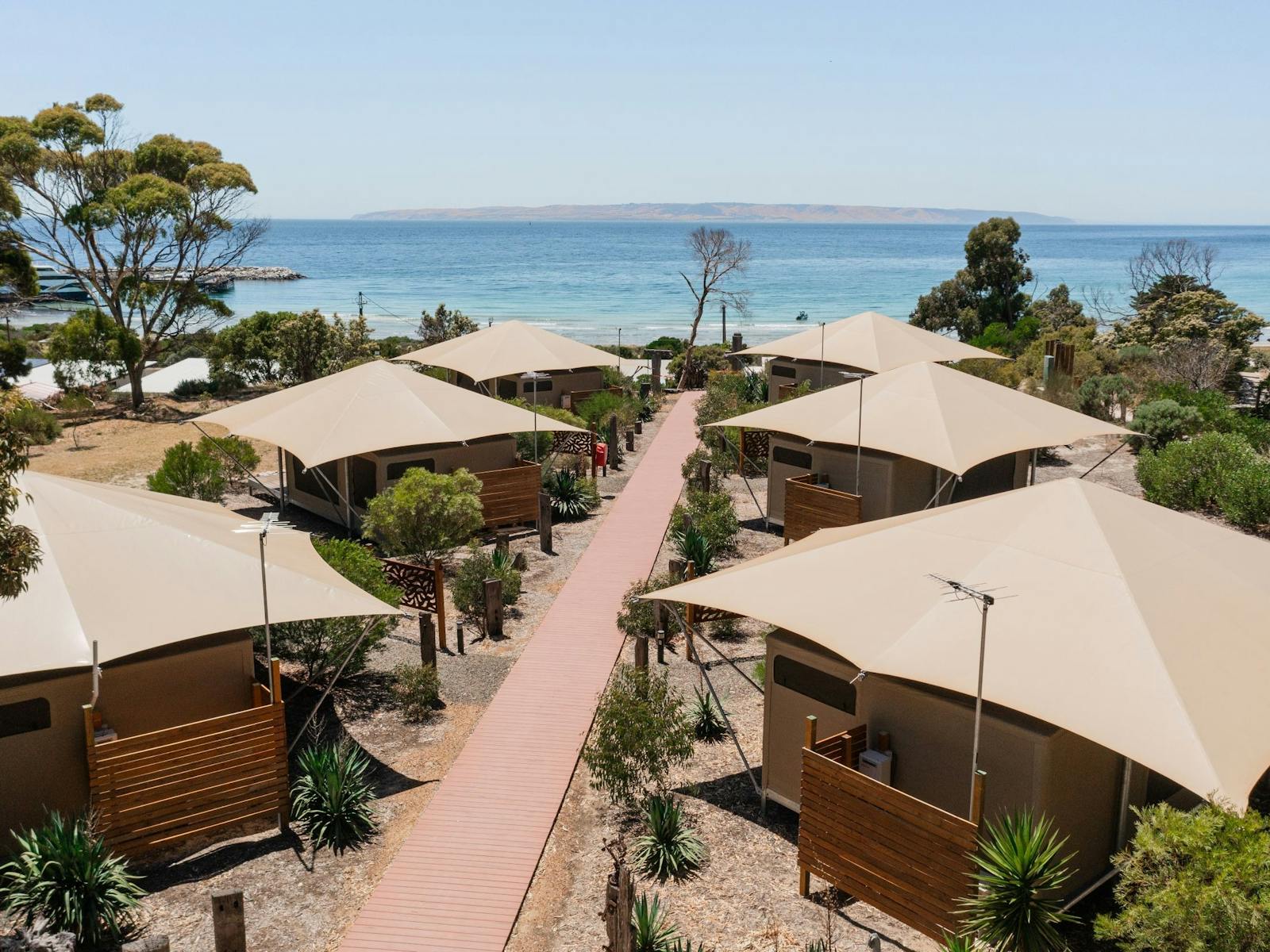The Cape Barren Goose is only found in Australia and is one of the world’s rarest geese. Last century, the Cape Barren Goose was hunted for food almost to extinction. Due to conservation efforts, their numbers have increased considerably, and this species is now relatively common within its limited range. The species was introduced to Kangaroo Island and is considered a healthy population.
Cape Barron Goose Facts
The plumage of Cape Barren Geese is pale grey with black markings near the tips of its wing feathers and tail. The unique and delightful bright green-yellow cere (skin above the bill), and small black bill, along with its pink legs and black feet give it its unique and discerning characteristics.
Adults grow to around 85 centimetres tall with a wingspan of around 1.7 metres. Pairs of Cape Barren Geese mate for life, the male Cape Barren Goose builds the nest, on the ground in Native Iris tussocks or a stick saucer nest in open grassy flats. Usually, four or five white eggs are laid from late autumn, with the parents vigorously defending their territory. Goslings hatch in spring and will be seen following the parents closely feeding in pasture and grassland.
Cape Barren Geese are grazing birds commonly feeding on tussock grass, spear grass, various native herbs and succulents. In agricultural landscapes you might see them feeding on pasture grasses such as legumes, barley, and clover.
Where to find them
The best time to view Cape Barren Geese on Kangaroo Island is from autumn through to early spring, before they migrate to the mainland to feed. Good viewing opportunities are at the Black Swamp and grassy plains of Flinders Chase National Park where they breed. There are also populations at Murray Lagoon, accessed via Seagers Road and they can often be seen on the Wisanger salt pans grazing in the paddocks.
How to watch them
Cape Barren Geese are flighty birds and best viewed from a comfortable distance of around 20 – 30 metres to avoid disturbing them. You might find them grazing on grass in a swamp habitat or paddocks. Approach them cautiously and if they are sitting on their nests, they may well be looking after their goslings. If they change their behaviour and show signs of alarm give them some more space.
Did you know?
Cape Barren Geese have the ability to drink salty and brackish water – which allows them to populate areas without fresh water, and to remain on offshore islands all year round.













